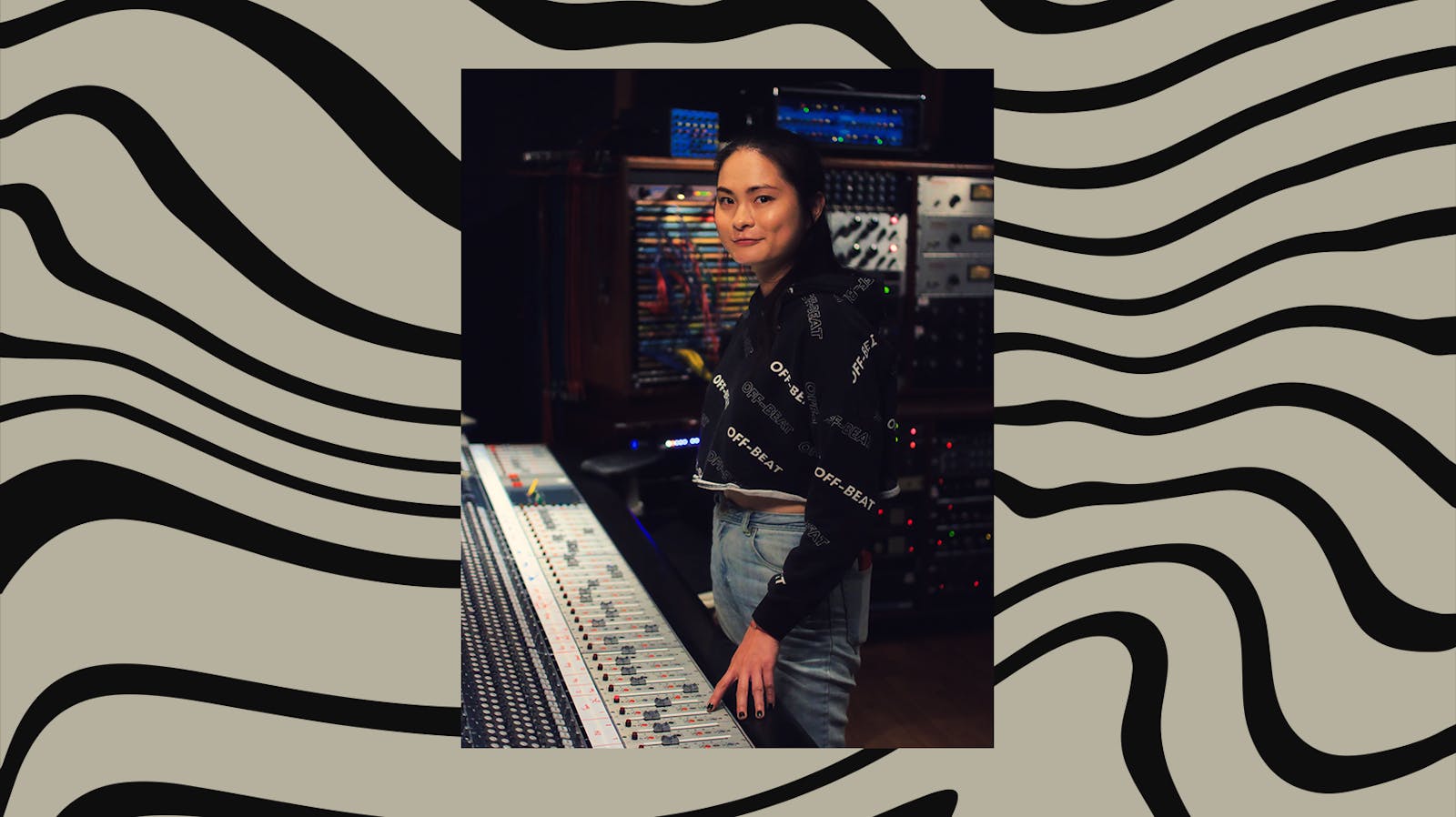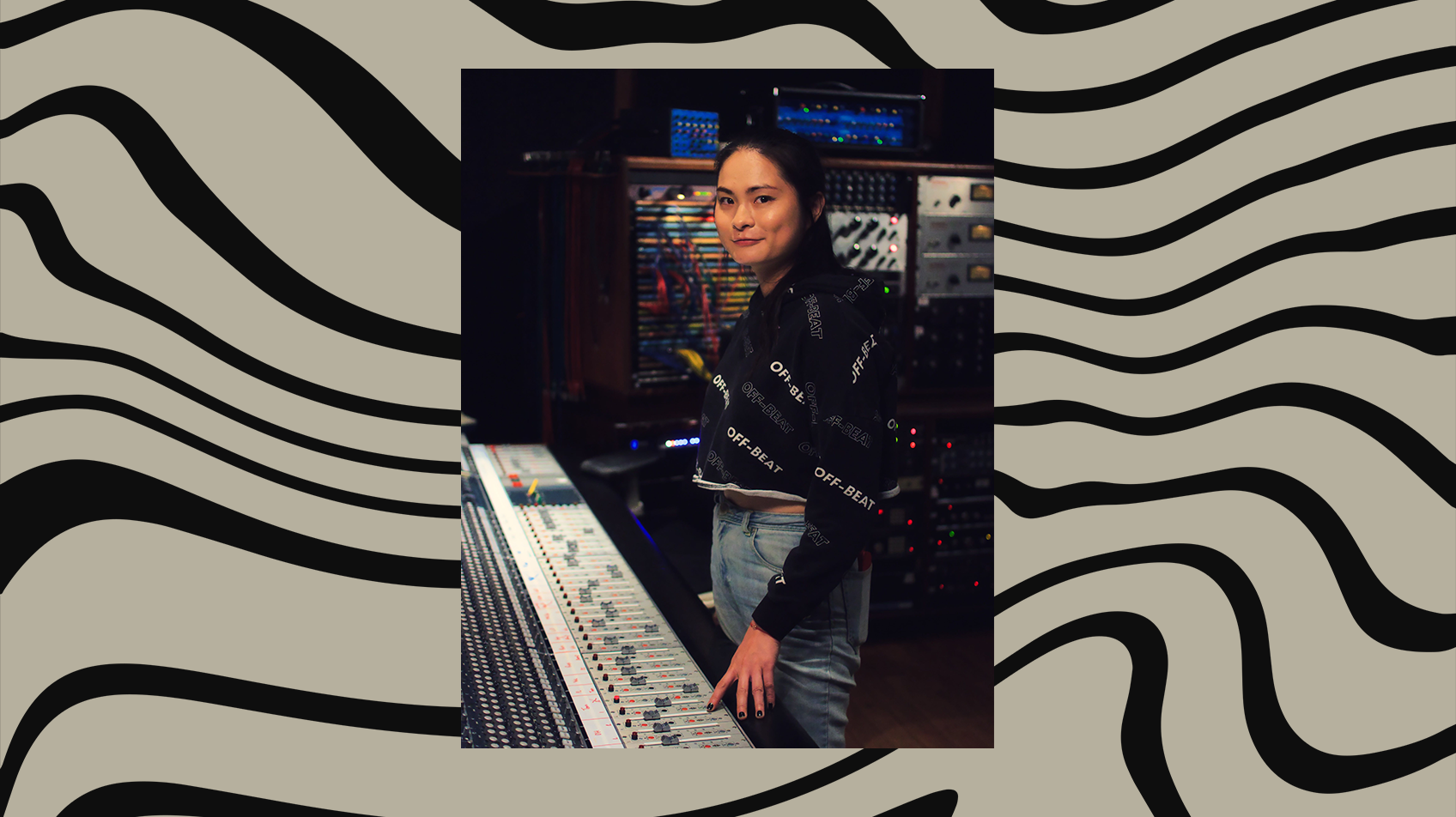
When Yáng Tan moved to the US from China in 2014, she wanted to learn the secrets behind making great records. It didn’t take long. After a stint as a runner at Paramount Recording Studios, she quickly worked her way up to become one of hip-hop and pop’s most coveted mix engineers and vocal producers, working on projects for the likes of Kanye West, J. Cole, and Kid Cudi.
Here, Tan talks with Output about falling in love with Pink Floyd, taking risks, and the importance of unlearning rules to unlock creativity.
Get yourself a cloud sampler with incredible built-in FX macros. Arcade gets fresh loops and samples every day. Play it today for free.
Accidental discoveries
Born in Guangzhou to parents who both worked in visual arts, creativity was always in Tan’s blood, but pursuing music wasn’t encouraged. “I actually wanted to do biochem when I was in middle school, but my mom wouldn’t let me, which is backward for Asian parents,” Tan says. “They wanted me to be an industrial designer, someone who designs for cars or for products. But I fell in love with music.”
As a child, Tan didn’t have the luxury of accessing music online, but it didn’t stop her from discovering artists. She spent her weekends in marketplaces, digging through piles of illegally imported CDs from the US. There was a secret language to gaining access to these coveted audio escapes. “The stores have hidden codes,” she says. “You have to know someone or know the code to see the CDs.”
“I wanted to listen to the things no one listened to. It opened up a lot of worlds to me.”
Yáng Tan
With few reference points for American music, she followed her gut — and the most captivating cover art — to pick out what CDs to buy. Then, she’d take her prizes home to record her favorite songs onto cassette tapes. During one of these weekend hauls she discovered her first musical love: the psychedelic rock of Pink Floyd. And she says it set the tone for her musical taste.
“I listened to a lot of records that are not very mainstream and I didn’t listen to pop music until I worked in the industry. I had a stereotype in my head about pop music. I thought pop music was dumb,” Tan admits. “But I was also young and rebellious. So, I wanted to listen to the things no one listened to. It opened up a lot of worlds to me. If I only listened to Taylor Swift growing up, I probably wouldn’t have the same perspective.”
Tan’s interest in music never waned, but she was young and had no way to pursue it. Then, in her second year of high school, a study abroad program in France was abruptly canceled due to a family emergency. Tan faced an unexpected gap year with nothing to do and saw an opportunity. Time. She hired instructors and started taking classes in secret, learning how to write, read, and play music under strict classical training.
“My parents didn’t know,” Tan laughs. “I had to teach English to make the money to pay for my music teachers. In China, if you want to change [your] major to music, you have to be able to sight read, you have to know how to play piano, and you have to also choose one more instrument or sing. So, I did opera singing.”
These under-the-table studies allowed her to eventually apply and get accepted to Peking University, which has a music and technology program. And with a move of over 1,000 miles to the North of China looming, it was impossible to keep her music education a secret any longer. Tan says that when her mother found out, she didn’t speak to her for months.
The beauty of synesthesia
Despite breaking from her parents’ background, Tan still has some visual arts sensibilities co-mingling with her musical DNA. This becomes apparent when she describes her approach to mixing tracks.
“Mixing makes sense to me. When I hear sounds, I can see colors,” Tan explains. “That’s how I remember keys. Different keys to me have different colors. So, when I listen to a client’s music, I paint a picture in my head before I mix it. And then as I mix, I try to match that image… I definitely think my background in arts training is helpful for making music. I was able to develop an aesthetic, taste, and the ability to make you feel something.”
“When I listen to a client’s music, I paint a picture in my head before I mix it. And then as I mix, I try to match that image.”
Yáng Tan
This instinctive understanding of how slices of audio fit together is at the core of her success. While she honed her skills by tackling complex, technical work with the China Central National Orchestra after graduating from school, trusting her intuition was one of the biggest lessons she learned when she moved to the United States.
“It was a big aha moment when I realized that a lot of producers are making hit records and don’t know any music theory,” explains Tan. They don’t even know what key they’re producing in. But they have great taste. They have a vision and can put things together that are marvelous.”
Rules are meant to be broken
Learning to let go of the rules has allowed her to adopt a process in the studio that is more open-ended, and lets her feel her way through mixing songs.
“I have a very weird way of working,” she laughs. “I don’t always start with drums. I love doing vocals first. I’ll put the vocal exactly where I want it to sit, especially if I’m mixing an EP with different songs. I try to let the vocal be the guide for how loud the record should be.”
Tan explains that starting with vocals lets her connect with the emotional weight of the project. Of course, she lets her clients help guide the conversation, but what’s made her such a sought-after mix engineer is her ability to create texture, enhance emotions, and place vocals center stage.
“Instruments can give way to the vocals if it’s necessary,” explains Tan. “Everything surrounds the vocal. So why not do the vocal first? It’s like that in production, too. You always give up frequencies to the vocal so it can be the star.”
Working in some of the industry’s most pristine studio environments has helped. And when she can, she prefers to work on an SSL board. “The image sounds wider for some reason,” says Tan. “And the EQ on an SSL is so much easier to work with. When I cut or boost [frequencies], I don’t get the artifacts that I’m trying to avoid. So I can go very aggressive on the SSL EQ.”
Another piece of hardware she likes to use? Output Frontier Studio Monitors. “I have the Frontier speakers and I love them,” Tan says. “They get me very excited to make music.”
As we continue to discuss her process, Tan lets on that even someone as seasoned as her, who works with top-tier names, can face roadblocks.
“I don’t always know when something is done. That’s the struggle for all creatives, right? I can work on a project for weeks or for months and still call it unfinished. The best I can do is to try to fix all the issues all at once. And don’t overthink it.”
Get the gold standard in studio sound. Frontier Studio Monitors give Barefoot’s legendary audio technology an Output spin. Check them out here.
Lifting each other up
As our conversation comes to a close, Tan reflects on the tremendous opportunities she was offered in the early stages of her career. And when we ask if she does the same for others now that she’s established, she says yes. Specifically, she seeks out ways to support and carve out space for other women in the industry.
“When I started out, very few people gave me trust with their projects,” Tan says. “I am very grateful for everyone who helped me in my path because women don’t get equal opportunities to get trained and gain knowledge. I want other women to know that there are spots for us. When we help each other out we are stronger. I want to be the person who can help create space and let other women know there is more out there.”



